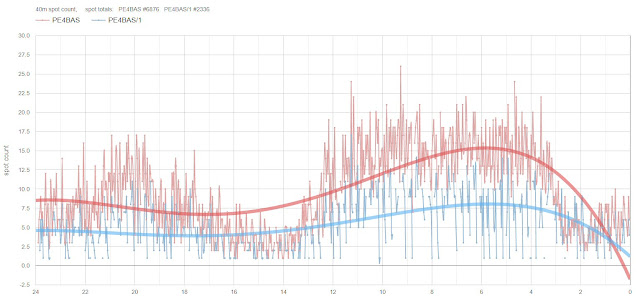I realize I didn't post much on my blog since the start of this year. As a matter of fact, I didn't even make a single QSO this new year. The only thing I did was listening once and a while.
To the left you see the feedpoint of my log (loop on ground) receiving antenna. It consists of a loop approx 5x5m directly on the ground fed by a 1:6 balun. Measured the R and SWR, it is about 50 Ohm from 7-30MHz. However, I'm not really impressed yet. It receives about the same as my multiband vertical at top of my tower. Compared to my 2x20 doublet in inverted-V configuration it is just not what I expected. I plan to do a decent receive test with two WSPR stations.
I decided to install my 160m sloper again as well. I hope to use it in the upcoming PACC contest. You can click on the photo at th right to view it in a bigger format. At top you can see 3 wires going from the tower, one of them, obviously the one in the same direction of the beam is the sloper.
If time allows I would like to listen to some AM MW broadcast stations as well with this antenna. Although I found that my all band vertical does well on listening on MW.
To increase the efficiëncy I did ad some radials to the base of the tower as well. Last year I made one QSO to VK (Australia), till now my record distance on topband.
Well, I decided to slow down my HAMradio activities. I really like this hobby but there are so many other things in this life. It is, of course, always a matter of priorities.






















